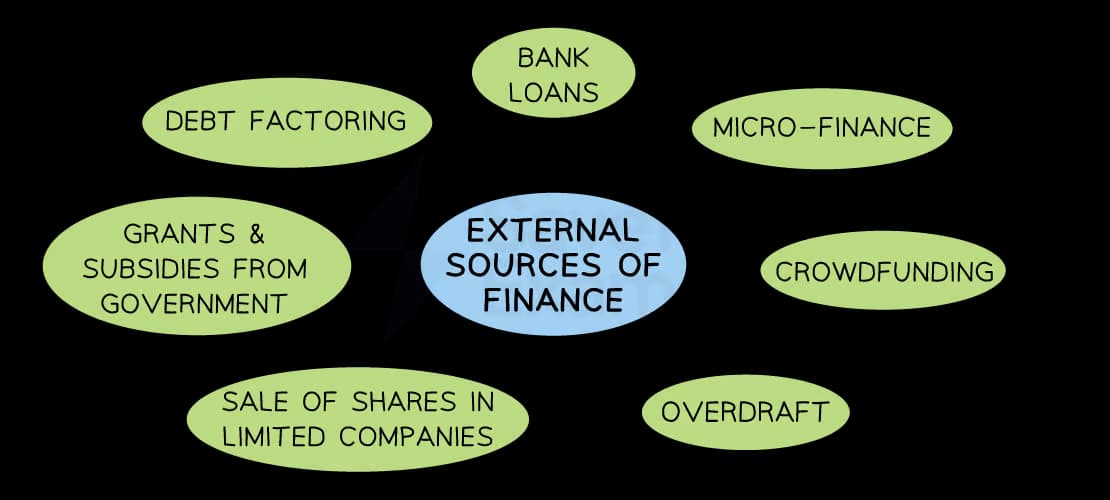Syllabus Edition
First teaching 2018
Last exams 2026
Internal and External Sources of Finance (Cambridge (CIE) IGCSE Business): Revision Note
Exam code: 0450, 0986 & 0264, 0774
Internal sources of finance
An internal source of finance is money that comes from within a business such as owners capital, retained profit and money generated from selling assets
An external source of finance is money that is introduced into the business from outside such as a loan or share capital
Owner’s capital: personal savings
Personal savings are a key source of funds when a business starts up
Owners may introduce their savings or another lump sum, e.g. money received following a redundancy
Owners may invest more as the business grows or if there is a specific need, e.g. a short-term cash flow problem
Retained profit
The profit that has been generated in previous years and not distributed to owners is reinvested back into the business
This is a cheap source of finance, as it does not involve borrowing and associated interest and arrangement fees
The opportunity cost of investing the money back into the business is that shareholders do not receive extra profit for their investment
Sale of assets
Selling business assets which are no longer required (e.g. machinery, land, buildings) generates finance
A sale and leaseback arrangement may be made if a business wants to continue to use an asset but needs cash
The business sells an asset (most likely a building) for which it receives cash
The business then rents the premises from the new owners
E.g. In early 2023, Sainsbury’s announced that it was in talks to sell the prime retail property for £500 million, which will then be leased back to them by the new owners, LXi Reit
Sale of stock
Stock may be sold at reduced prices in order to raise additional finance
This reduces the opportunity cost and storage cost of high inventory levels
It must be done carefully to avoid disappointing customers if stock runs low
E.g. A clothing retail business holds a January sale to get rid of old stock and make space for new Spring stock
Managing working capital
A business can also generate additional finance internally by managing its working capital more effectively
They can negotiate extended payment terms with suppliers
They can incentivise customers to pay more promptly for credit purchases
Evaluating the use of internal finance
Advantages | Disadvantages |
|---|---|
|
|
External sources of finance
In some cases, a business may not be able to fulfil its needs with internal sources of finance
Some projects or investments may require a significant amount of finance
External sources, such as loans or issuing shares, can provide the necessary funds for these expensive projects
External sources of finance

The implications of the different types of external finance need to be carefully considered
Interest and fees to arrange finance can vary significantly between financial providers
The percentage of company ownership required in exchange for finance depends on how much risk investors are willing to take
The length of time allowed to repay borrowings or achieve investment targets also varies
Explanation of external sources of finance
Source | Explanation |
|---|---|
Bank overdraft |
|
Bank loan |
|
Hire purchase and leasing |
|
Share issue and debentures |
|
Debt factoring |
|
Trade credit |
|
Grants and subsidies |
|
Businesses also access finance through the use of credit cards or charge cards
These are particularly useful as a means to allow employees to make small purchases that are centrally paid
Interest charges can be high so use is carefully monitored
Alternative sources of finance
In recent years new forms of business funding have become available to business and can provide the funding required
Two of the most common are crowdfunding and microfinance
Explanation of crowdfunding and microfinance
Source | Explanation | Advantages | Disadvantages |
|---|---|---|---|
Crowdfunding |
|
|
|
Microfinance |
|
|
|

Unlock more, it's free!
Did this page help you?